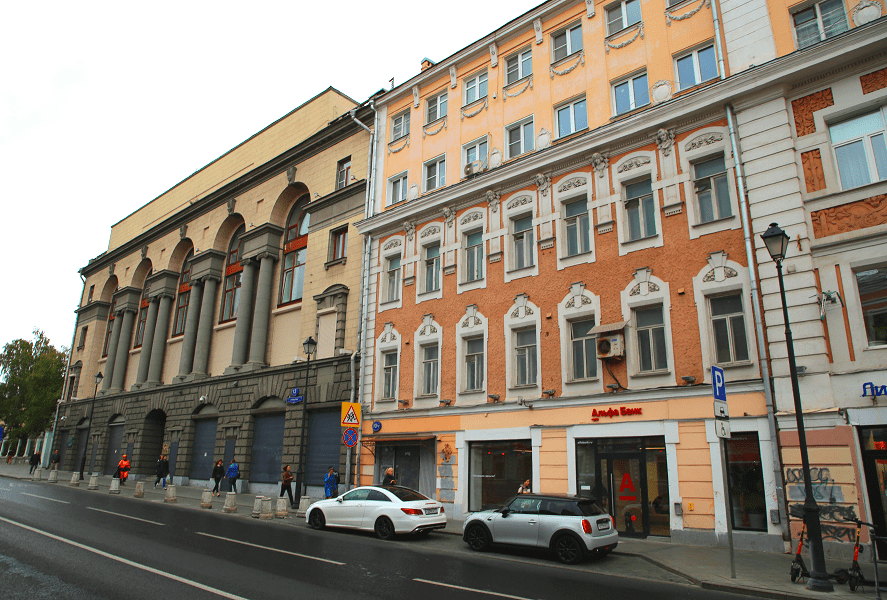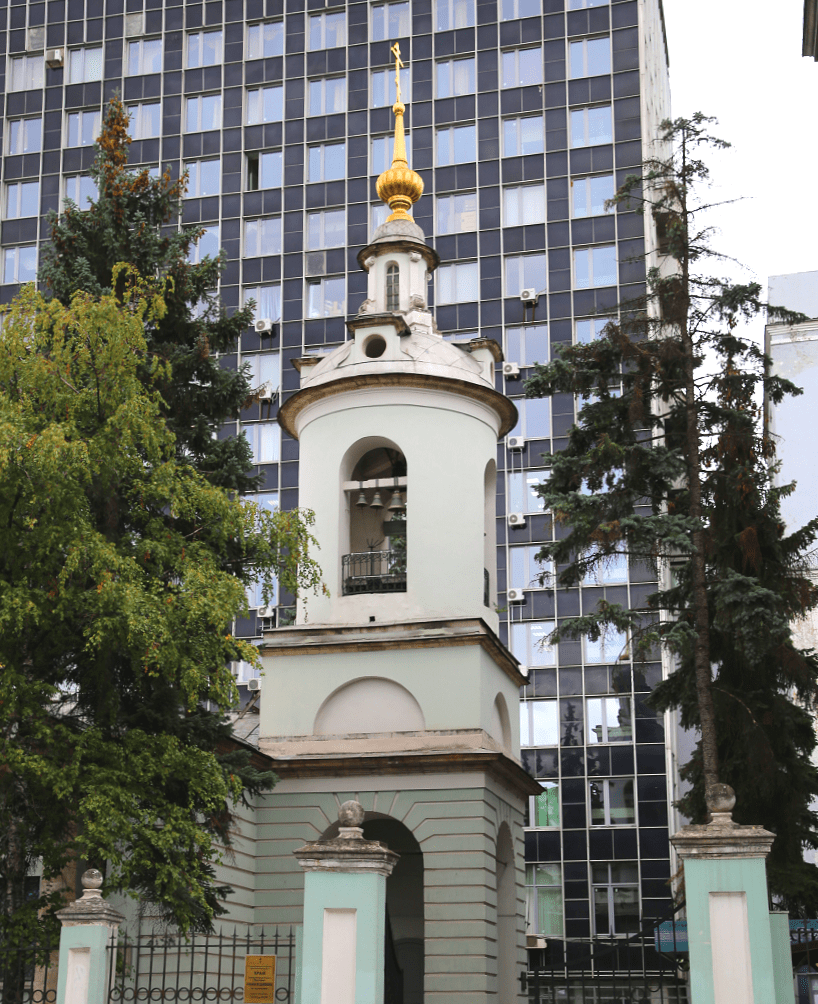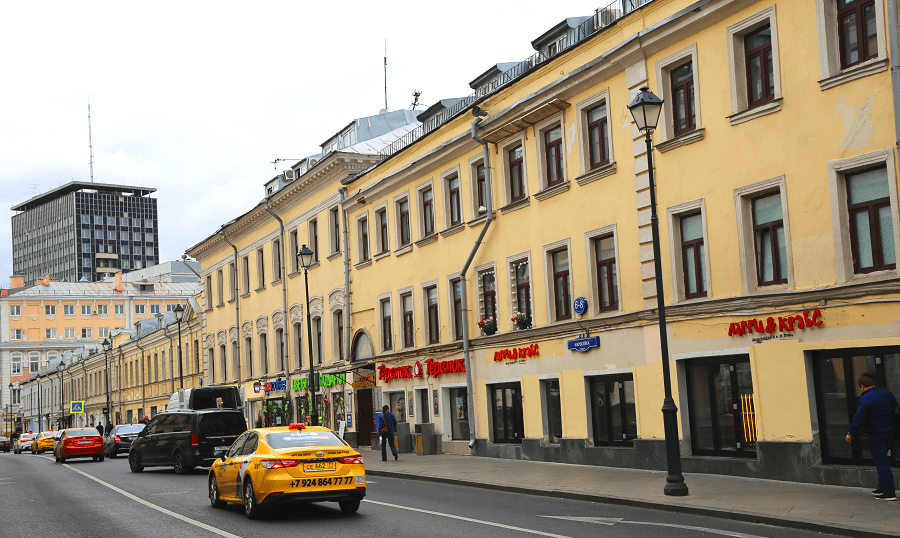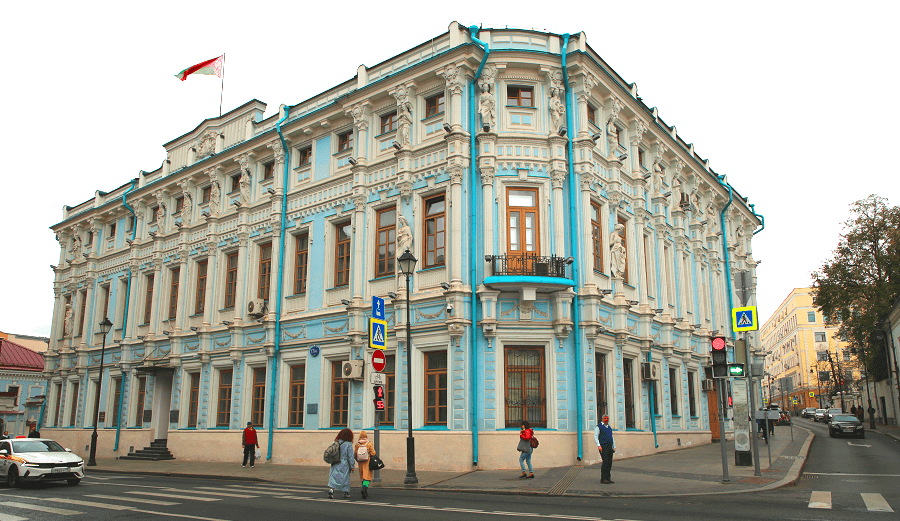Maroseyka Street (in 1954-1990 – Bogdan Khmelnitsky Street) is a street in the Central Administrative District of Moscow (Basmanny District).
Passes from Ilyinsky Gate Square to Pokrovka Street (intersection with Armenian and Starosadsky lanes). The numbering of houses is conducted from the Ilyinsky Gate Square.
Maroseyka is part of the ancient Pokrovka Street and got its name in the 17th century after the Little Russian Compound (with a distortion of Maloroseyka – Maroseyka), which was located at the corner of Maroseyka and Bolshoy Zlatoustinsky lanes, on the site of the current houses 9 and 11.
In the 15th-16th centuries, royal gardens were located on Pokrovka; The “royal road” along Maroseyka to Preobrazhenskoye and Izmailovo attracted the nobility. At the same time, foreigners settled on the street. In 1638, out of 83 houses on Maroseyka, 62 were occupied by representatives of boyar families. The reduction of the Orthodox flock prompted the clergy to seek protection from Mikhail Fedorovich, and in 1643 a decree was issued prohibiting the purchase of households by foreigners and closing the Lutheran prayer houses.
In the 1900s-1910s, Maroseyka was rebuilt by architects I. A. Ivanov-Shits and M. S. Lyalevich. Most of the street still retains the buildings of the first half of the 19th century.
Notable buildings
On the odd side
No. 1/4 is one of the parts of the Polytechnic Museum.
No. 3/13, p. 1 – The building of the Poultry Union (1928-1929, architect V.D. Tsvetaev; based on the buildings of the Nikolo-Ugreshsky metochion); Until 1991, the Central Committee of the Komsomol was located here), since 1992 – the Russian Union of Youth. Identified object of cultural heritage.
No. 5 – Church of St. Nicholas the Wonderworker in Klenniki (Nikola in Blinniki), 1657, bell tower 1749.
No. 5, p. 2 – The house of the clergy of the Church of St. Nicholas the Wonderworker in Klenniki.
No. 7/8, p. 1 – The building of the Association of Printing, Publishing and Book Trade I. D. Sytin (1913-1914, architect A. E. Erichson). Previously, there was the estate of the Shakhovskys. Declared object of cultural heritage.
No. 9/2, pp. 1-1A – Profitable house of P. A. Khvoshchinsky (1872, architect I. P. Mironov; 1896, architect I. P. Zalessky).
No. 9/2, p. 6 – Residential building of P. A. Khvoshchinsky (1816; 1893, architect I. A. Ivanov-Shits; 1910, P. L. Shchetinin). Object of cultural heritage of regional significance.
No. 9/2, pp. 7, 8 – City estate, XVIII century – early. 20th century (on the former Little Russian Compound site, 1669-1730).
No. 11, p. 1 – House of Naryshkin – Raguzinsky. Initially, mainly foreigners lived here, among them the Hanseatic merchant D. N. Rutz.
No. 11/4, pp. 2, 3 – Residential building for employees of the Moscow Imperial Humanitarian Society (1875, architect G. B. Prang; 1990s); on the second floor was a house church. Valuable city-forming object.
No. 13, p. 1 – Profitable house of A. V. Lobzev (1906, architect Yakovlev). Valuable city-forming object.
No. 13, pp. 2 and 3 – Profitable houses of A. V. Lobzev (1905, architect E. K. Nirnsee). An object of cultural heritage of regional significance and a valuable city-forming object.
No. 15, p. 1 – Profitable house with shops by A. E. Shelagin (1873). Valuable city-forming object.
No. 17/6 – The building, known as the house of P. A. Rumyantsev, was built in the transitional style from baroque to classicism in the 1780s.
No. 17/6, p. 2, apartment building (1871; 1877; 1925; 1946, architect F. M. Ovchinnikov; 1990s).
On the even side
No. 2/15, an architectural monument (regional) – the city estate of V. P. Razumovskaya – V. D. Popova – Eremeevs (late 18th – mid-19th centuries, architect V. A. Balashov, architectural technician A. N. Knabe).
No. 6-8, p. 1 (part), an architectural monument (regional) – an apartment building with shops, the beginning of the 19th – beginning of the 20th centuries (the building is based on the main house and outbuildings of the city estates of V.P. Izmailov, Ya.A. Golitsyn, A. V. Repnina, 1770-1790).
No. 6-8, p. 1 (part), an architectural monument (a newly discovered object) – the main house of the city estate of the Saltykovs (1760-1770).
No. 10 is the profitable house of R. A. von Kolbe (1882, architect N. V. Karneev; 1899, architect E. S. Yuditsky).
No. 10/1, p. 3, residential building (the 1930s, architect M. I. Babitsky).
No. 12, p. 1 – the building of the Association of the Russian-American rubber manufactory “Triangle” (1914-1916, architect M. S. Lyalevich). The Federal Service of the National Guard Troops of the Russian Federation currently occupies the building.
No. 14/2, p. 3, an architectural monument (federal) – the Church of Cosmas and Damian on Maroseyka (1791-1793, architect M. F. Kazakov). The existing fence was installed in 1972. Finishing was completed by 1803.
Transport
Nearest metro: Kitay-gorod.
See more streets and squares in Moscow, monuments of Moscow, architecture of Moscow.
















